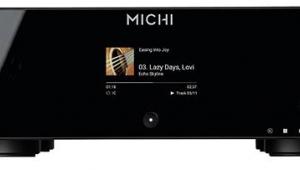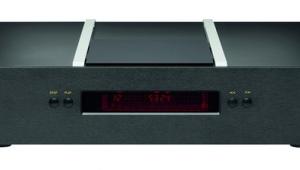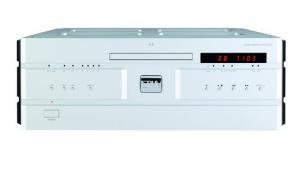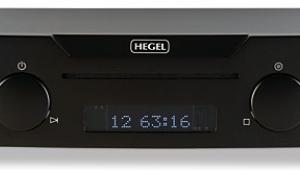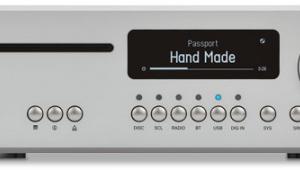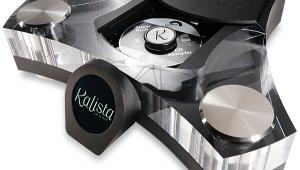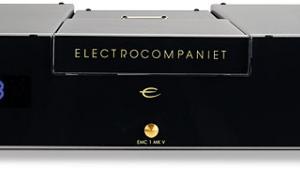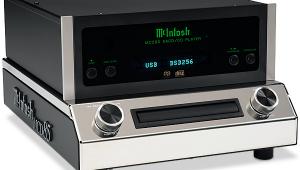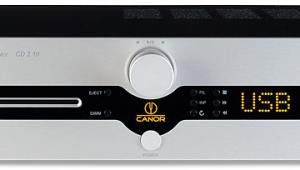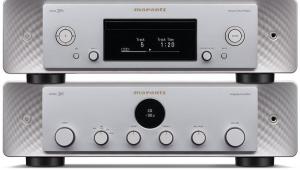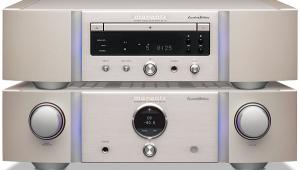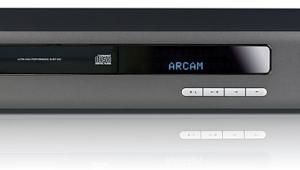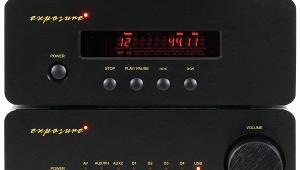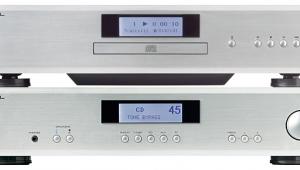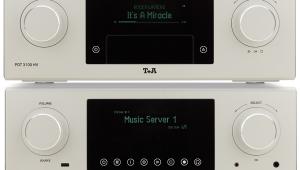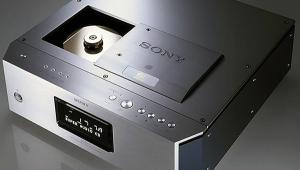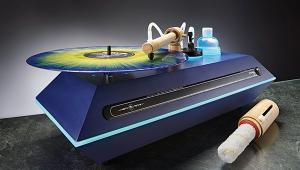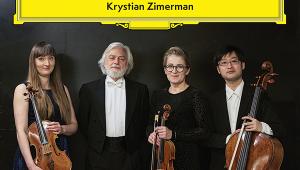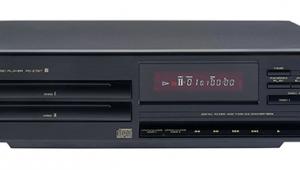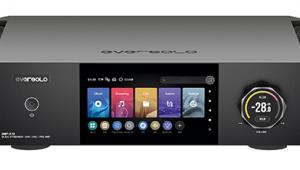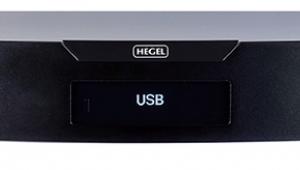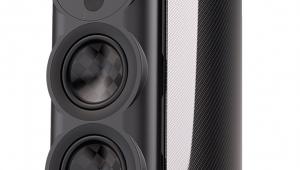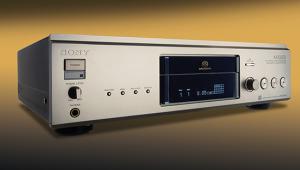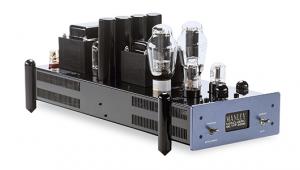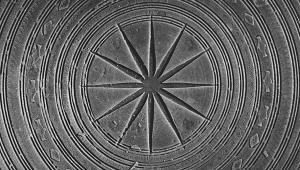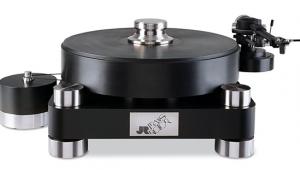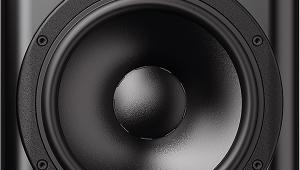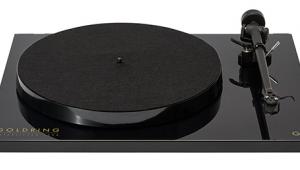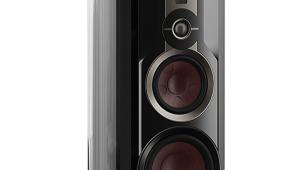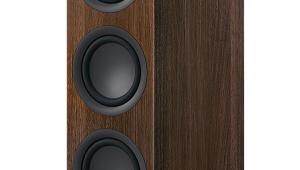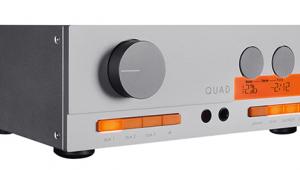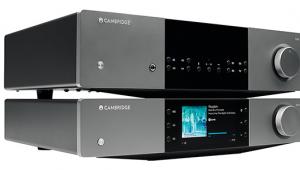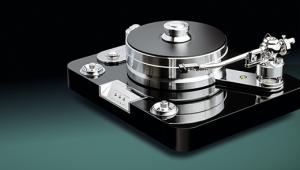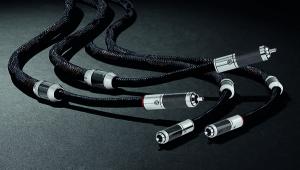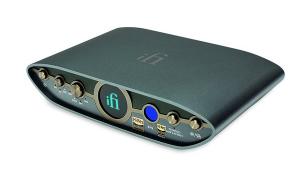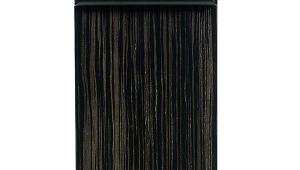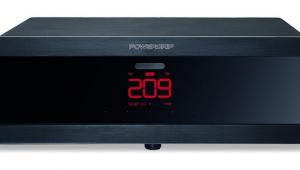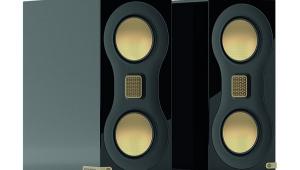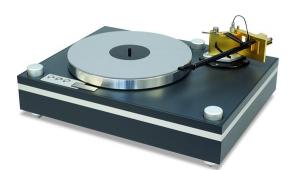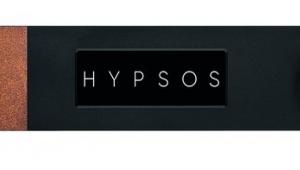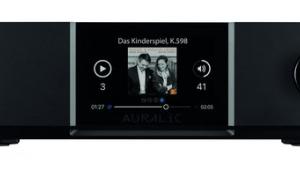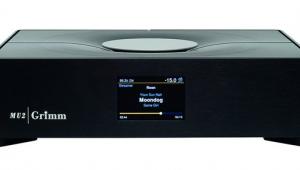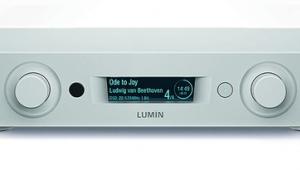Marantz SACD 10/Model 10
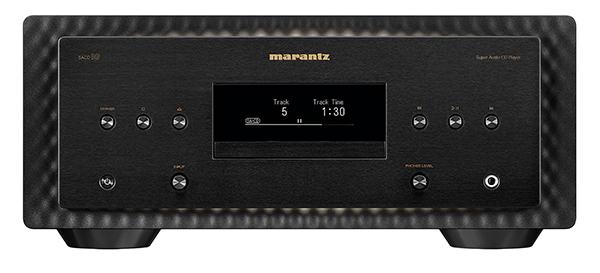

At the tail end of 2020, when Marantz released its Model 30 amplifier [HFN Jan ’21], the name paid homage to the brand’s Model 1 preamp of 1954 while the chassis styling nodded at past Marantz designs from hi-fi’s ‘golden age’. However, this was not a case of the New York-born (but now Japan/California-based) company jumping headfirst into the so-called ‘nostalgia economy’ with a retro/vintage-inspired product, more the first step in a complete overhaul of its brand image. Since then, there have been various additions to the new-look Model catalogue, but all have sat below the Model 30. Until now.
On test here are Marantz’s new Model 10 integrated amplifier, plus SACD 10 player/DAC. Priced £11,999 and £9500 respectively, these are two of three flagship products in a new ‘10 Series Collection’, the other being the Link 10n networked preamp/DAC at £9999. Such pricing puts these pieces way ahead of anything else the company sells, not to mention hammering home the difference between it and sister brand Denon. Buy all three and you’ll have a system that covers all bases, albeit with overlap in terms of features, as we’ll discover later.
Module muscle
The Model 10 is touted by Marantz as its most powerful integrated amplifier yet. A claimed 2x250W/8ohm comes from Class D modules developed with Purifi, an advancement on the Hypex devices employed in the outgoing 2x200W-rated PM-10 [HFN Sep ’17]. Although, as ever, there’s more to this specification than meets the eye [see PM's Lab Report].
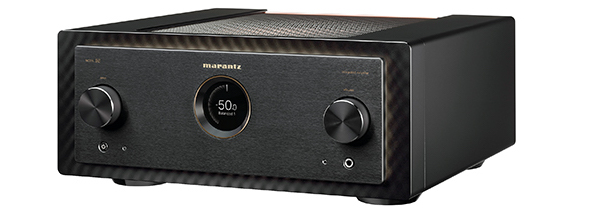
An all-analogue affair, the amp offers line-level inputs on balanced XLR and unbalanced RCA connections, plus an MM/MC phono input (with three impedance settings for moving-coils) and a line-level ‘recorder’ out. Additional connectivity allows the Model 10 to be used with external amps – there are ‘power amp’ inputs and preamp outs, again on both XLR and RCAs, the latter also facilitating a subwoofer connection. Twin sets of copper-plated speaker terminals cover A+B and bi-wired systems. Multiple amps can be linked together through Marantz’s FCBS (Floating Control Bus System) connection with, for example, pairs of amps each mono’d for bi-amp operation with speakers having a split crossover.
Around the front, the amplifier cuts a very clean, stylish figure. Some elements of its design are indebted to the company’s Model 9 tube amp of 1960, including the ‘hairlining texture’ of the aluminium front panel. Other aesthetic flourishes, including the textured finish to the outer fascia, and the (dimmable) illumination that spills out behind the control panel, are now Marantz ‘regulars’. And, of course, the central porthole OLED display isn’t a new idea, having first appeared in more primitive form on the aforementioned Model 9.
Amp anatomy
A rippled, mesh grille spans the Model 10’s top and lets you peek inside, aided by yet more illumination. But what’s visible here – an encased transformer, plus preamp circuitry employing the latest SA-3 iteration of Marantz’s proprietary HDAM op-amp modules, first seen in the PM-99SE amplifier of 1992 – is just the tip of the hi-fi iceberg. This sizeable unit (440x192x473mm, whd) tips the scales at 33.7kg with a design boasting ‘complete engineering separation of left-to-right, front-to-back and top-to-bottom internal structures’.
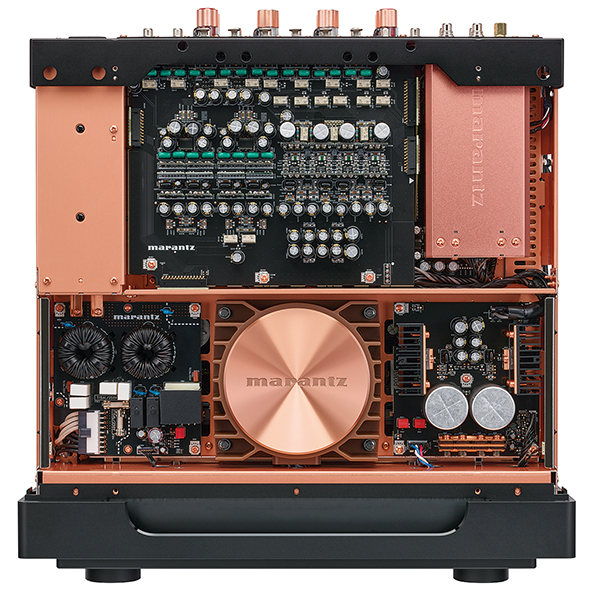
The lower ‘floor’, which sits on a triple-layer copper-plated base, is devoted to amplification, and features the dual-mono Class D power amp modules with internal heatsinking, and twin switch mode power supplies. A copper shielding plate separates this from a second floor, which is itself split into separate sections: input, preamp and volume stage circuitry, plus potted phono module, at the rear; transformer and linear PSU for the preamp at the front.
Another copper chassis then supports the amp’s control unit and headphone amplification, before the device is wrapped with aluminium side panels and fronted by a 45mm-thick machined aluminium fascia. Overall, Marantz says that every aspect of the Model 10’s physical construction is new, bar the screws.
Drive for perfection
A similarly robust, layered construction (including that chunky front panel) is employed on the SACD 10. Here, on the base layer, Marantz’s long-standing tray-loading SACDM-3 drive mech is sandwiched between two transformers dedicated to the player’s digital and analogue power supplies. The upper section, meanwhile, houses eight-layer PCBs hosting the SHARC DSP-based MMM (Marantz Musical Mastering) processing, custom 1-bit D/A conversion and HDAM-based analogue output.
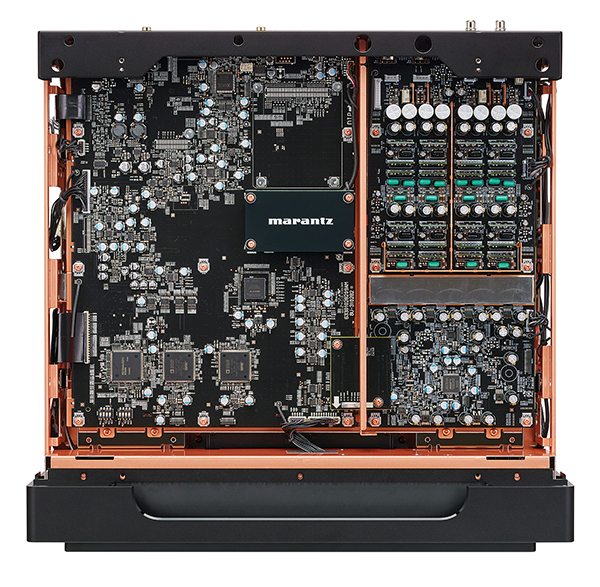
This is where the 10 Series Collection’s overlap comes in. The SACD 10’s DAC stage mirrors that found in the Link 10n streaming preamp, both supporting PCM to 384kHz/32-bit and DSD256 via USB-B, and 192kHz/24-bit files over coaxial, optical and USB-A connections. Missing is network streaming, through the 10n’s HEOS module, and an HDMI ARC input. Equally, the network player’s preamp design borrows from the Model 10 integrated, including the MM/MC phono stage, while all three devices build in a headphone amp. Anyone who does opt for the full set will encounter areas of redundancy.
Smart select
The remote, bundled with each model, is finished in smart dark green and operates the amp, disc player and streamer, with buttons changing function depending on the unit selected. For example, the numerical keypad covers track selection with the SACD 10, but ‘Smart Select’ preset duties with the Link 10n. And you can control the amp’s volume if the remote is in SACD or streamer mode.
The handset also gives access to the devices’ user menus. Settings on the amp include ±10dB bass and treble tone controls, L/R balance, and phono stage options, while the player offers two digital (PCM) filters, two dither settings (plus ‘off’) and four noise-shaping modes [see boxout]. The SACD 10’s menus are text-based, but the amp includes graphics for volume, and a VU-style level meter. Using both units is straightforward, and the SACD 10, with its quiet, solid-feeling disc-tray and large buttons, will tickle silver-disc lovers.
![]() Grand designs
Grand designs
The beating heart of this two-box set-up is, of course, the Model 10 amp, which proved quite capable of driving both B&W’s 801 D4 Signature [HFN Sep ’23] and big Wilson Audio Alexx Vfx speakers in the HFN listening room. Using the SACD 10 as both a player and USB DAC, plus feeding the Model 10 with external sources, revealed differences in presentation, but the underlying power of Marantz’s integrated amp remained a constant. As did its ability to present plenty of musical detail without losing sight of an inherent smoothness and refinement.
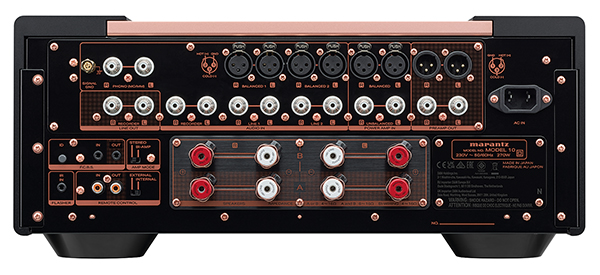
In other words, this is a fine flagship product that’s able to engross you in the music being played, and not just in terms of slam and drama. With the title track of Julia Fordham’s Swept [Circa 262 249], played from the SACD 10, the system created a striking impression of the singer between the speakers, encircled by echoing keyboards and acoustic guitar. There was air and space, gently warm bass, small details and realistic textures – particularly the string instruments that come and go.
The Marantz pairing delivered a similarly grand soundstage with Christy Moore’s ‘Burning Times’ [Smoke & Strong Whiskey; Newberry Recording CM 002-2]. Percussive elements were scattered around the edges of a soundstage that had superb depth, this spatial delivery catching the ear as much as the well-extended bass, sonorous piano, and purposeful kick drum. In the final moments of the track an acoustic guitar is mirrored between the left and right speakers, and this in-the-studio effect was striking in its clarity and fluidity.
Less about sheer fidelity was Etta James’ ‘Breakin’ Up Somebody’s Home’, recorded with The Roots Band at the Montreux Jazz Festival in 1990 [The Montreux Years; BMG CAT460DCD]. This is a raucous live recording, and more centrally focused than you might imagine, but the SACD 10/Model 10 offered excellent transient attack on blasts of brass and drums, plus weight to the massive chords. James’ voice sounded extraordinarily powerful, even more so when a rasping throatiness accentuated the lyrics in the self-affirming anthem ‘I Got The Will’. It was gritty, fun and rockin’, and the Marantz system’s otherwise finessed sound didn’t overshadow it.

Above: The partnering ‘deep teal’-coloured alloy RC004PM remote serves all three 10 series products, providing access to all inputs, functions, options and setup menu
With its digital filters and ‘noise-shapers’, the SACD 10 provides plenty of scope for sound tuning. While I was quickly able to come to a preference of filter, finding the first option to sound that little bit ‘fuller’ when playing Bruce Springsteen’s ‘Cover Me’ [The Collection 1973-84; Columbia/Sony 88697747712 6], making a call on the noise-shaping modes, regardless of their attention-grabbing names, was less easy. That said, I eventually decided the mode entitled Balanced was… well, subjectively the most balanced.
Big reveal
Listening to the Springsteen track, plus the rockier ‘Darlington County’, revealed the slightly brightish skew to these Born In The USA recordings. The SACD 10/Model 10 pairing didn’t go out of its way to bump up the warmth factor, instead exposing the highs and lows of the mastering job. It gave an equally revealing portrayal of ‘Someday, Someway’, from Mobile Fidelity’s SACD release of Marshall Crenshaw’s self-titled debut [UDSACD 2036]. This was sparkling and distinct in the treble, splashy cymbals and tambourines clattering briskly. Crenshaw’s doo-wop vocals are a bit thin, but making up for this was the clarity and richness of the bassline, and the layering of vocals in the verses. It was almost an overload of information.
Kick on the side
Marantz and Denon amplifiers have long drawn comparisons, their two sonic signatures pigeon-holed as, typically, smooth versus energetic. There’s an element of truth to that, but the Model 10, with its Purifi-inspired Class D amplification, isn’t a Class A/B honey monster. Yes, it has a very listenable, unfatiguing nature, but it comes with a side order of power and exuberance. As an example, the triumphant grooves of Aerosmith’s ‘Dude (Looks A Lady)’ [Big Ones; Geffen 424 5462] were thrust forward, the Marantz system locking into a swaggering rhythm.
Again, the bass was deep and naturalistic, and again an ability to locate instruments in the soundstage space was apparent, as Joe Perry’s palm-muted guitar rhythms sliced through the righthand side. ‘Janie’s Got a Gun’, however, was even better: richer, more spacious, more dynamic. The out-of-the-blue snare drum strikes that punctuate the verses sounded almost frightening – and huge.
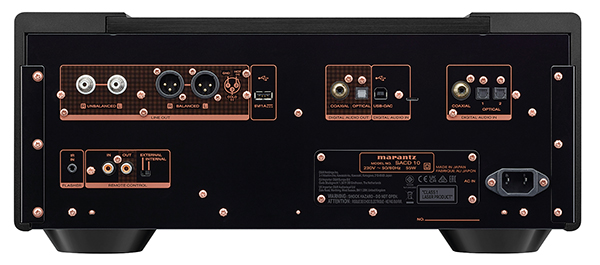
Using the dCS Varèse DAC [HFN Feb ’25] as the (ultimate) source into the Model 10, and streaming the same track from Qobuz in 44.1kHz/16-bit, offered an expected uptick in sound quality. The amp found extra solidity with the bass guitar, and a less edgy delivery of Steve Tyler’s cigarette-ravished vocals. But this is not to compare Marantz’s player/DAC to the 20-times-the-price dCS system, only to say that the Model 10 has more to give.
The SACD 10 took a while to read some CD-R discs, and on first attempt threw up a ‘No Disc’ message when fed Miles Davis’ Sketches Of Spain [Mobile Fidelity UDSACD 2086]. Opening and closing the tray resolved that problem.
Notes of nostalgia
Otherwise, using this heavyweight machine was a joy, as was making tweaks to its settings, thanks to the sensible layout of its menus. Marantz’s IR remote also operates over quite a wide ‘window’, which is a boon for those who like to wave their controller vaguely in the direction of the hardware.
Anyway, back to the Davis set, recorded in 1960 with Gil Evans arranging. Opener ‘Concierto de Aranjuez’ began with woody castanets stage left, while smooth, delicately textured winds twisted in and out of view, and Davis played long, forlorn trumpet notes.
It was one of those soundstages where your ear can’t help but be pricked continually, and it is credit to the Marantz system that the entire 16-minute composition, while not exactly flying by, held my attention. This is from the early days of stereo, with clearly defined ‘left’ and ‘right’, but the balance of the Model 10’s sound ensured it came across as a glorious, unified whole.
Hi-Fi News Verdict
Like all good flagships, Marantz’s Model 10 and SACD 10 impress across the board, from their build quality and design to features and performance. The well-connected amp combines warmth and refinement with tangible power, while the player/DAC is a master of detail and clarity, whether from disc or digital. The result is pure listening pleasure from two statement products that will bring pride of ownership.
Sound Quality: 89%
